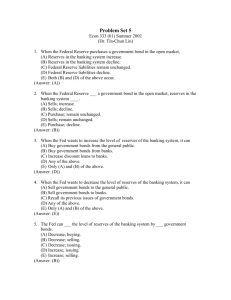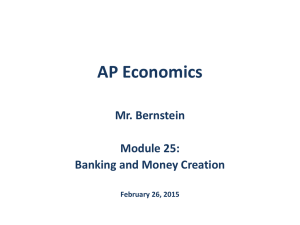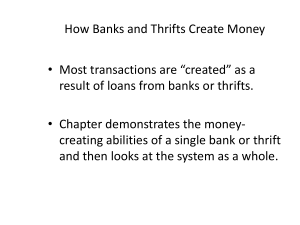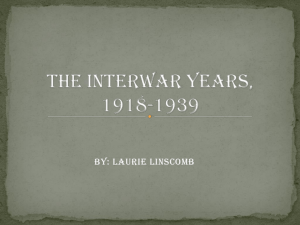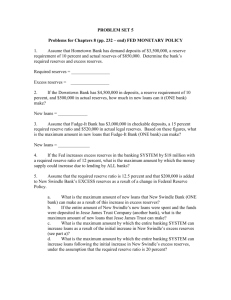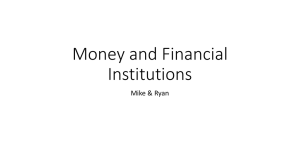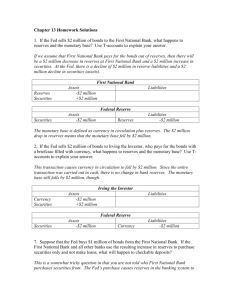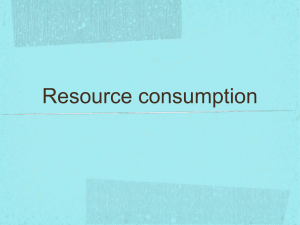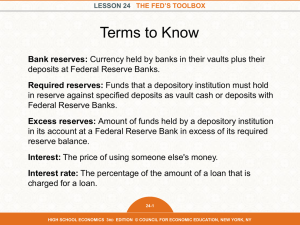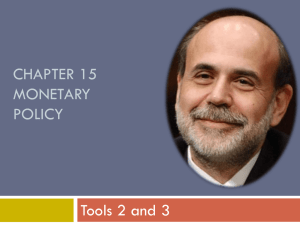Macro_online_chapter_13_14e
advertisement
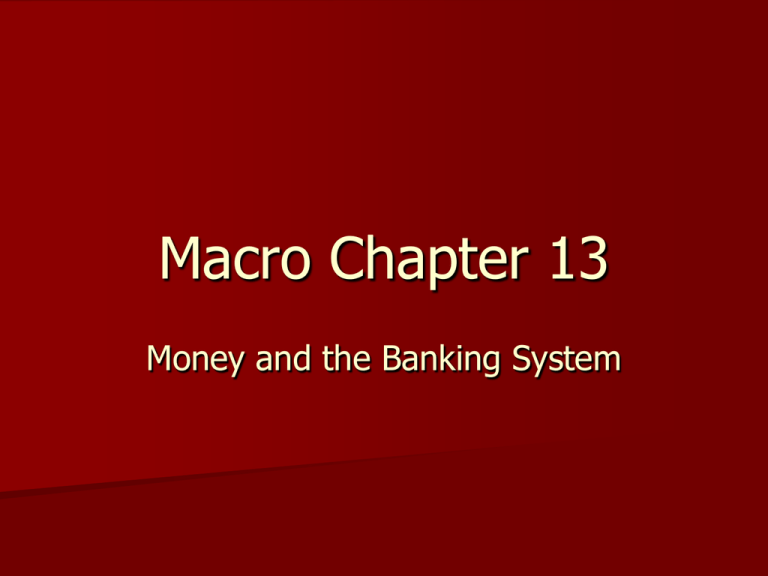
Macro Chapter 13 Money and the Banking System 6 Learning Goals 1) List and describe the functions of money 2) Define the alternative measures of money and distinguish between M1 and M2 3) Explain fractional reserve banking 4) Investigate how banks create money by extending loans 5) List the tools used by the Fed to control the money supply 6) Analyze how those tools change the money supply What is Money? 3 functions of money 1) Medium of exchange 2) Store of value 3) Unit of account Optional video about money titled “History Channel US Mints- paper and coin production” Look for the following: When and why the federal government started printing money Where the US Mint locations are Where the Bureau of Engraving and Printing has locations How much currency is printed and where it is How is the Money Supply Measured? 2 Measures of Money M1 = most liquid assets, i.e. cash or the easiest to turn in to cash M2 = less liquid, but still able to turn in to cash demand deposits = checking accounts; can get your money “on demand” Credit cards are NOT money! The Business of Banking Optional video about banks titled “History Channel Banks-Banking history” Look for the following: When and where was the first bank formed in the US? How did Bank of America get started? When were credit cards first created and how did they change to the way they are today? Explanation of fractional reserve banking Watch Video: FTC80_03-fractional reserve banking Example of bank run: Watch Video: It’s a Wonderful Life-bank run Q13.1 If you have a checking account at a local bank, your bank account there is 1. an asset to the bank and an asset to you. 2. a liability of the bank and a liability of yours. 3. a liability of the bank and an asset to you. 4. an asset to the bank and a liability of yours. Typical assets and liabilities of banks: Assets: – Vault cash – Reserves at the Fed – Loans to customers – Bonds (i.e. securities) Liabilities: – Checking deposits – Savings deposits – Borrowings How Banks Create Money by Extending Loans Explanation of money creation process: Watch video “FTC80_03-money creation process” Here’s how excess reserves are used to “create” money: See files “deposit creation.pdf” and “deposit multiplier.pdf” Key points: (1) Banks are required to keep a portion of their deposits as reserves at the Federal Reserve Bank – These are required reserves – Roughly equal to 10% of deposits (2) Banks may keep or loan out additional reserves – These are excess reserves – Excess reserves earn interest from the Federal Reserve, so the bank must decide where it’s earning the biggest return- by loaning them out or by keeping them with the Fed Q13.2 Suppose you withdraw $1,000 from your checking account. If the reserve requirement is 20 percent, how does this transaction affect the supply of money and the excess reserves of your bank? 1. There is no change in the supply of money; your bank's excess reserves are reduced by $800. 2. There is no change in the supply of money; your bank's excess reserves are reduced by $200. 3. The money supply increases by $1,000, and the excess reserves of your bank are reduced by $800. 4. The money supply increases by $1,000, and the excess reserves of your bank are reduced by $200. Q13.3 (MA) Suppose you deposit $1,000 into your checking account. If the reserve requirement is 10 percent, what impact does this transaction have? 1. 2. 3. 4. 5. 6. 7. The money supply increases The money supply remains the same The bank’s required reserves increase by $100 The bank’s required reserves decrease by $100 The bank’s required reserves increase by $900 The bank can make new loans of $900 The bank can make new loans of $1,000 The Federal Reserve System A quick look at the Fed: Watch video Catch Me If You Can- check routing Four tools of the Fed to control the money supply: 1) Reserve requirements 2) Open Market Operations 3) Extend loans 4) Interest paid on excess and required reserves Expansionary Monetary Policy: Buy securities (i.e. bonds, Treasury or other) Extend more loans Reduce the interest rate paid on reserves Restrictive Monetary Policy: Sell securities (i.e. bonds, Treasury or other) Extend fewer loans Increase the interest rate paid on reserves Q13.4 If the Fed lends to member banks, what happens to reserves and the money supply? 1. Reserves increase and the money supply decreases. 2. Both increase. 3. Reserves decrease and the money supply increases. 4. Both decrease. Open market operations is the key tool the Fed uses Open market operations is the buying and selling of bonds, usually US Treasury securities Class Activity: Let’s see how this works Copy this activity into your notes. I think it will be helpful to study later. Watch video: Macro Chapter 13 contentFed buys bonds Bank: (make up your own name) Assets Required Reserves Liabilities + Net Worth Deposits Excess Reserves Bonds Net Worth Loans Total Total Results: New excess reserves at your bank = $100 Impact on money supply = $100 / 0.10 = $1,000 Q13.5 (MA) When the Fed sells Treasury Bonds on the open market, it will tend to 1. 2. 3. 4. increase the money supply decrease the money supply increase interest rates decrease interest rates Q13.6 (MA) When the Fed buys Treasury Bonds on the open market, it will tend to 1. 2. 3. 4. increase the money supply decrease the money supply increase interest rates decrease interest rates Question Answers 13.1 = 3 13.2 = 1 13.3 = 2, 3, 6 13.4 = 2 13.5 = 2, 3 13.6 = 1, 4


